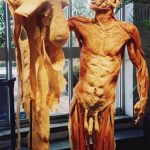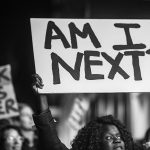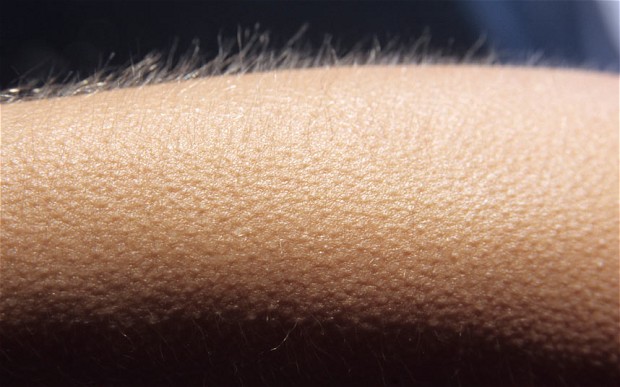Trauma Training Tip
Autumn’s crisp, dry and clear air has a particular impact on the skin. I always know that the energy of the Metal Element has arrived when the skin on my hands becomes parched, dry and ashy.
 Skin has richly sensate and strong opinions about the nature, location, quality, and kind of touch it wants. Acupuncturists penetrate the skin with needles; physical care and other medical providers touch their patients’ skin in every session. This organ is our largest one and wants to be respected and heard! Being mindful about how we relate to our clients’ skin is critical for all providers.
Skin has richly sensate and strong opinions about the nature, location, quality, and kind of touch it wants. Acupuncturists penetrate the skin with needles; physical care and other medical providers touch their patients’ skin in every session. This organ is our largest one and wants to be respected and heard! Being mindful about how we relate to our clients’ skin is critical for all providers.
The sensory nerve endings in the skin help us pay attention to conditions and changes in the outside world. This capacity for sensate experiences of external realities lets us know when and where we can return to curious, open exploration of our world. It is often our first encounter in any circumstance with the external world – and can store traumatic memories.
 Our skin supports us to distinguish excitation and threat, critically important information for trauma survivors. It tells us when tickling is fun, as well as the precise moment it becomes an experience of a loss of control. During sexual intimacy, we can be touched in similar places with similar intensity and experience it as loving or mechanical, delicious or threatening. Our skin communicates clear distinctions between danger and delight, compassion and exploitation.
Our skin supports us to distinguish excitation and threat, critically important information for trauma survivors. It tells us when tickling is fun, as well as the precise moment it becomes an experience of a loss of control. During sexual intimacy, we can be touched in similar places with similar intensity and experience it as loving or mechanical, delicious or threatening. Our skin communicates clear distinctions between danger and delight, compassion and exploitation.
Likely because of its deep physiological and relational impact, touching the skin mindfully can both trigger the perception of threat and provide a critical container for safety. Using touch with trauma survivors is similar to early humans harnessing fire—it is a potent force, with potential to inflict harm if used inappropriately, but it is also life sustaining and nourishing when understood and used appropriately. Like our ancestors who, over time, learned to manage fire, survive cold winters, cook food, and advance society, we can use touch as a life-sustaining and coherence-building tool.
Alaine’s Two Cents
Our nation needs its healers more than ever. We have a critical role to play in transforming the culture of fear-based violence and ethnic hatred that is screaming on the streets of Pittsburgh, PA, Jeffersontown, KY, Parkland, FL, Chicago, IL, and too many other places here and abroad.
Whe n healers support survivors to find their core regulation and balance, these survivors come to know their value and respect the essential value in all others. When healers are able to facilitate embodied states of safety in survivors, they support their client’s capacity to build relationships across differences. When survivors have a mere breath of time between their reactive fear and their impulse to strike-out with violent rage, the possibility of making another choice emerges.
n healers support survivors to find their core regulation and balance, these survivors come to know their value and respect the essential value in all others. When healers are able to facilitate embodied states of safety in survivors, they support their client’s capacity to build relationships across differences. When survivors have a mere breath of time between their reactive fear and their impulse to strike-out with violent rage, the possibility of making another choice emerges.
The personal history of the perpetrators of mass shootings often includes childhood trauma. Unable to mount or complete a mobilization response to perceived threat (e.g. high fever, early surgery, hunger, domestic violence, abandonment) a sense of constant threat may remain in tissues and risk leaving their mobilization thermostat dysregulated. These survivors are particularly vulnerable to being being told that “they” (Jews, Blacks, women, gays, immigrants) are a threat to their personal survival. Their need to “get” that bully on the playground, or respond appropriately to even mild disagreements at home or at work, is influenced by their historic inability to respond to threats experienced as an infant or small child. Such survivors may dream of showing them our true power–but end up choosing the wrong time, the wrong person, and the wrong level of response. Their strategy for responding to perceived threat goes from zero to sixty before even one breath of space allows a more thoughtful response. Shooting deaths in synagogues, churches and grocery stores are too often the tragic result.
On November 6th, please vote for leaders who will foster respectful relationships across differences in our families and communities, develop policies that support the safety and well-being of children, and provide a foundation for the health of individuals and the communities in which we live and work. Lives depend on it.
 Healing trauma spreads like honey on warm toast. The National Capital Area chapter of Acupuncturists Without Borders is responding to the crisis facing immigrants and refugees, and is currently developing a response to support the local Jewish community with free, stress-reduction acupuncture treatments. The need for a healing response is growing and the call for our services is expanding. There are openings for volunteer acupuncturists, acupuncture assistants, and translators (Spanish, French, Amharic). The goal is for volunteers to serve one 3-hour shift per month. Interested? Please contact: Awb.nca@gmail.com or 301-531-5443 for more info.
Healing trauma spreads like honey on warm toast. The National Capital Area chapter of Acupuncturists Without Borders is responding to the crisis facing immigrants and refugees, and is currently developing a response to support the local Jewish community with free, stress-reduction acupuncture treatments. The need for a healing response is growing and the call for our services is expanding. There are openings for volunteer acupuncturists, acupuncture assistants, and translators (Spanish, French, Amharic). The goal is for volunteers to serve one 3-hour shift per month. Interested? Please contact: Awb.nca@gmail.com or 301-531-5443 for more info.
Check This Out!
My thanks to the Somatic Experiencing Trauma Institute for hosting me on this webinar! In it, I review the five steps of the Self Protective Response, their relationship to the Five Elements, and how having this framework can help providers create more nuanced clinical approaches for trauma survivors. Let me know what you think!
https://traumahealing.adobeconnect.com/pc5p1f4py3h7/
Clinical Curiosity
Where is your clinical curiosity carrying you?
Send me a question or two and I will explore them with readers in this corner next month.
Q. I have a new teen aged patient with a western diagnosis is POTS (postural orthostatic tachycardia syndrome) or Dysautonomia. It manifests as dizziness when standing, palpitations, extreme fatigue, insomnia, headaches, sometimes joint pain, extreme stress/anxiety. Her mother says that she is constantly hyper vigilant – and it is almost impossible for her to sleep.
Her mom reports that she was given an oral painkiller during labor which sped up her labor precipitously. Her daughter was not breathing well at birth and was sent to NICU where her breathing was attended to. She was a quiet baby who didn’t cry much–even when hungry. She has had confusing skin rashes her whole life.
A. The statement “she was a quiet baby who didn’t cry much” is a classic symptom of a management strategy related to developmental trauma. Some babies with challenging births will scream in sympathetic arousal constantly and others will fall into a more parasympathetic freeze or collapse — which was her choice.
Thankfully acupuncture’s fundamental orientation is to support core regulation. She has chosen a great modality to help her!
I would focus on restoring capacity in her parasympathetic system – what Acupuncture and Asian Medicine calls her yin energy. Use slow and titrated approaches to build a sense of safety and relationship. Help her negotiate the distance between you and which side of the table she wants you standing on. Finding and respecting her boundaries will be very important.
When she is ready for and welcomes the kidney/adrenal hold, I suspect it will be very helpful in virtually every treatment. Use it alongside building core regulation with constitutional acupuncture treatment. She will surely also benefit from patient education about water consumption, electrolyte balance and perhaps some yin-building herbs.
Once she has found greater core regulation, you might go to the skin with mindful touch. I am thinking about its association with the lungs, and her history of skin rashes.
She is lucky to have found you! Let me know how she does.

